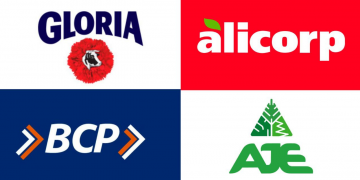Crédito: fuente
WASHINGTON — Top Capitol Hill negotiators sealed a deal Sunday on an almost $1 trillion COVID-19 economic relief package, finally delivering long-overdue help to businesses and individuals and providing money to deliver vaccines to a nation eager for them.
The agreement, announced by congressional leaders, would establish a temporary $300 per week supplemental jobless benefit and a $600 direct stimulus payment to most Americans, along with a new round of subsidies for hard-hit businesses and money for schools, health care providers and renters facing eviction.
It came after months of battling and posturing, but the negotiating dynamic changed in Republicans’ favor after the election and as the end of the congressional session neared. President-elect Joe Biden was eager for a deal to deliver long-awaited help to suffering people and a boost to the economy, even though it was less than half the size that Democrats wanted this fall.
House leaders informed lawmakers that they would vote on the legislation on Monday, and the Senate was likely to vote on Monday, too. Lawmakers were eager to leave Washington and close out a tumultuous year.
“There will be another major rescue package for the American people,” Senate Majority Leader Mitch McConnell, R-Ky., said in announcing the agreement for a relief bill that would total almost $900 billion. “It is packed with targeted policies to help struggling Americans who have already waited too long.”
A fight over Federal Reserve emergency powers was resolved Saturday night by the Senate’s top Democrat, Chuck Schumer of New York, and conservative Republican Pat Toomey of Pennsylvania. That breakthrough led to a final round of negotiations Sunday.
Still, delays in finalizing the agreement prompted the House to take up a one-day stopgap spending bill to prevent a government shutdown at midnight Sunday. The Senate was likely to pass the measure Sunday night as well.
The final agreement would be the largest spending measure yet. It combined COVID-19 relief with a $1.4 trillion government-wide funding plan and lots of other unrelated measures on taxes, health, infrastructure and education. The government-wide funding would keep the government open through September.
Passage neared as coronavirus cases and deaths spiked and evidence piled up that the economy was struggling. The legislation had been held up by months of dysfunction, posturing and bad faith. But talks turned serious in recent days as lawmakers on both sides finally faced the deadline of acting before leaving Washington for Christmas.
The $300 per week bonus jobless benefit was one half the supplemental federal unemployment benefit provided under the CARES Act in March and would be limited to 11 weeks instead of 16 weeks. The direct $600 stimulus payment to most people would also be half the March payment, subject to the same income limits in which an individual’s payment began to phase out after $75,000.
President Donald Trump was supportive of the effort, particularly of the push for providing more direct payments. “GET IT DONE,” he said in a tweet late Saturday.
Lawmakers had hoped to pass the bill this weekend and avoid the need for a stopgap spending bill, but progress slowed Saturday as Toomey pressed for the inclusion of a provision to close down the Fed’s lending facilities. Democrats and the White House said it was too broadly worded and would have tied the hands of the incoming Biden administration, but Republicans rallied to Toomey’s position.
Late-breaking decisions would limit $300 per week bonus jobless benefits — one half the supplemental federal unemployment benefit provided under the CARES Act in March — to 10 weeks instead of 16 weeks as before. The direct $600 stimulus payment to most people would be half the March payment, subject to the same income limits in which an individual’s payment begins to phase out after $75,000.
After the announcement, Schumer and House Speaker Nancy Pelosi, D-Calif., announced additional details, including $25 billion in rental assistance, $15 billion for theaters and other live venues, $82 billion for local schools, colleges and universities, and $10 billion for child care.
Still, Democrats wanted more. Pelosi, in a letter to colleagues, called the package an initial step. “In 31 days, when Joe Biden enters the White House, more help will be on the way,” Pelosi said.
The governmentwide appropriations bill would fund agencies through next September. That measure was likely to provide a last $1.4 billion installment for Trump’s U.S.-Mexico border wall as a condition of winning his signature.
The bill was an engine to carry much of Capitol Hill’s unfinished business, including an almost 400-page water resources bill that targets $10 billion for 46 Army Corps of Engineers flood control, environmental and coastal protection projects. Another addition would extend a batch of soon-to-expire tax breaks, including one for craft brewers, wineries and distillers.
The end-of-session rush also promised relief for victims of shockingly steep surprise medical bills, a phenomenon that often occurs when providers drop out of insurance company networks.








